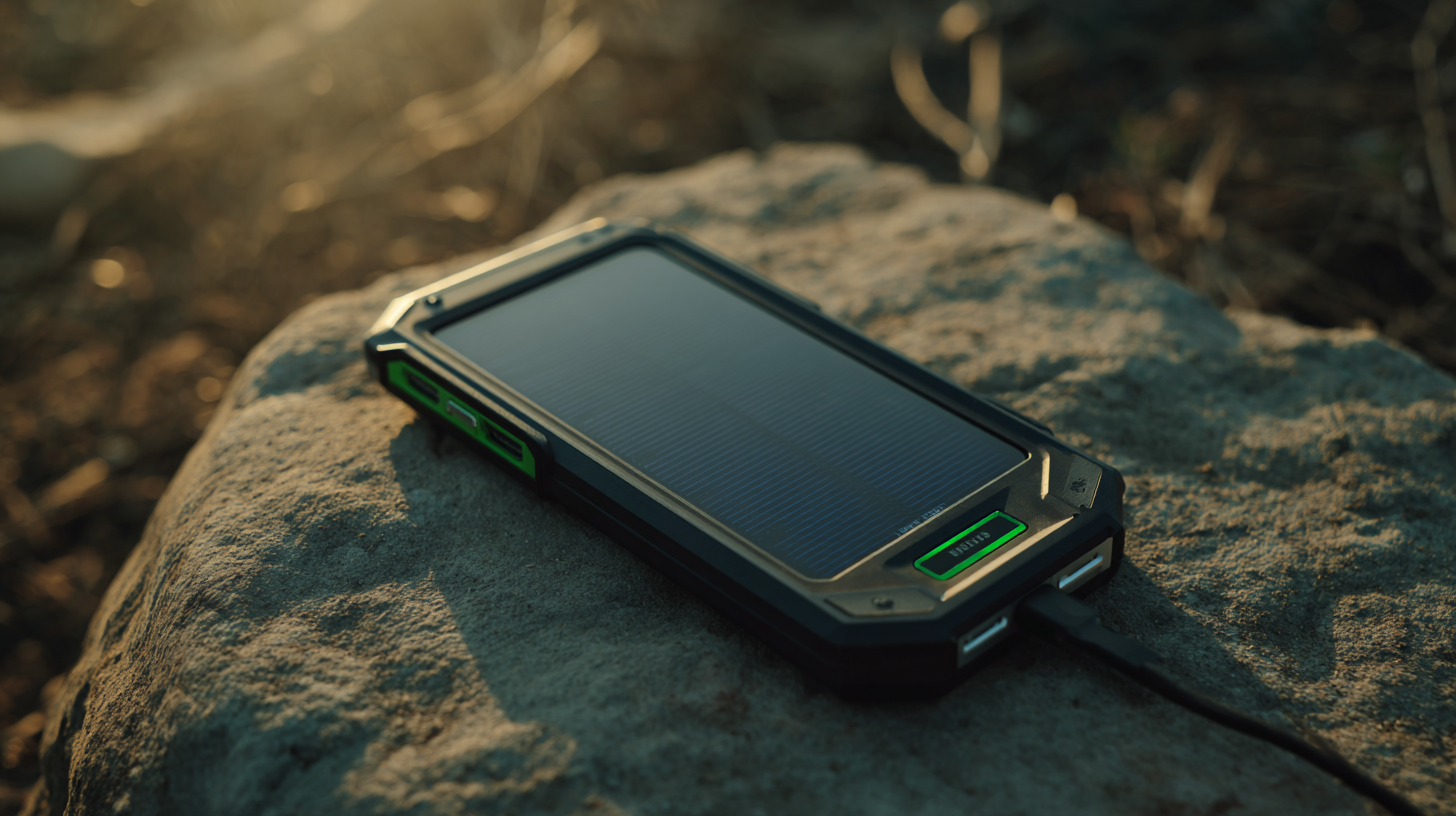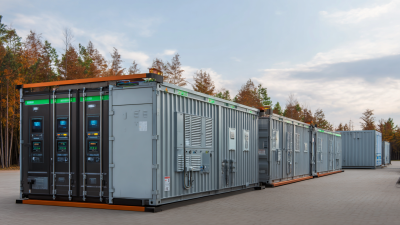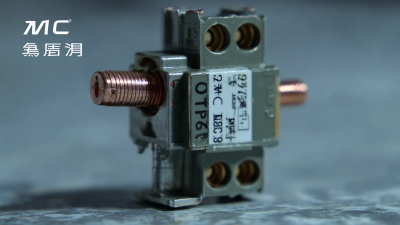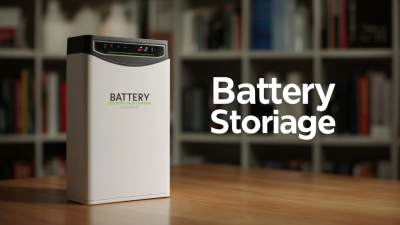Exploring Alternative Energy Solutions for Mobile Battery Charging
As the global demand for mobile devices continues to surge, the need for efficient and sustainable charging solutions has never been more critical. According to a report by MarketsandMarkets, the mobile battery market is projected to reach USD 85 billion by 2025, fueled by the increasing penetration of smartphones and portable electronics. Traditional charging methods often rely on non-renewable energy sources, which exacerbate environmental concerns. In light of this, exploring alternative energy solutions for mobile battery charging, such as solar, kinetic, and wireless technologies, offers promising avenues for reducing carbon footprints and enhancing user convenience. By harnessing these innovative approaches, we can pave the way for a more sustainable future in mobile energy consumption.

Benefits of Solar-Powered Chargers for Mobile Devices
As mobile devices become integral to our daily lives, the quest for sustainable energy solutions for charging them has gained momentum. One of the most promising alternatives is solar-powered chargers. These devices harness the sun's energy to recharge your gadgets, offering a clean, eco-friendly solution that reduces dependence on traditional power sources. Solar chargers are not only convenient for outdoor enthusiasts but also provide an energy-efficient option for urban users looking to decrease their carbon footprint.
The benefits of solar-powered chargers extend beyond mere convenience. They enable users to enjoy the freedom of charging their devices anywhere the sun shines, making them ideal for camping trips, hikes, or even during power outages. Additionally, many solar chargers are designed to be compact and lightweight, ensuring portability without sacrificing functionality. As technology advances, the efficiency of these chargers continues to improve, allowing for quicker charging times and broader compatibility with various mobile devices. By embracing solar-powered charging solutions, we are not just powering our devices; we are also contributing to a more sustainable future.
Benefits of Solar-Powered Chargers for Mobile Devices
This chart illustrates the average charging time and capacity for solar-powered chargers compared to traditional chargers. The data represents the average time taken (in hours) to fully charge a mobile device and the estimated charging cycles over one year.
Comparative Analysis of Wind Energy Solutions for Battery Charging
 Wind energy has emerged as a promising alternative for mobile battery charging solutions. With the increasing need for portable power in our on-the-go lifestyles, harnessing wind energy presents a sustainable and efficient method to keep our devices charged. Small-scale wind turbines can be paired with battery storage systems to create a reliable energy source, particularly in windy regions. These systems can power everything from mobile phones to electric vehicles, providing an eco-friendly option for users.
Wind energy has emerged as a promising alternative for mobile battery charging solutions. With the increasing need for portable power in our on-the-go lifestyles, harnessing wind energy presents a sustainable and efficient method to keep our devices charged. Small-scale wind turbines can be paired with battery storage systems to create a reliable energy source, particularly in windy regions. These systems can power everything from mobile phones to electric vehicles, providing an eco-friendly option for users.
When considering wind energy solutions for battery charging, there are a few key tips to keep in mind. First, assess your location's wind patterns; areas with consistent winds will yield better efficiency for wind turbines. Additionally, choose turbines that are designed for low-wind conditions if you live in a less windy area. Finally, integrating solar panels with wind turbines can optimize energy capture, allowing you to benefit from both renewable sources.
Another factor to consider is the type of battery storage. Lithium-ion batteries are commonly used due to their high energy density and efficiency. However, exploring newer technology such as flow batteries could enhance longevity and sustainability. Combining these strategies can ensure that wind energy is not just an alternative, but a cornerstone of mobile charging solutions.
Pros and Cons of Portable Fuel Cell Technology for Mobile Charging
Portable fuel cell technology presents a promising alternative for mobile battery charging, offering both advantages and drawbacks that merit careful consideration. One of the primary benefits of using fuel cells is their efficiency. Unlike traditional batteries that lose power over time, fuel cells convert chemical energy directly into electricity, delivering a consistent power output. This makes them particularly suitable for outdoor activities or emergency situations where reliable energy is essential. However, the initial cost of portable fuel cell systems can be prohibitive for some users.
While the advantages are appealing, potential users should also be aware of the limitations associated with portable fuel cells. They often require specific fuel types, such as hydrogen or methanol, which may not always be readily available. Additionally, the refueling process can be more complex compared to simply plugging in a traditional charger. To make the most of portable fuel cell technology, consider investing in a multi-fuel compatible model to expand your fuel options.
Tip: Always check local regulations about fuel storage and refueling locations to ensure you’re compliant and have a steady supply. Also, familiarize yourself with maintenance needs to maximize the lifespan and efficiency of your portable fuel cell system.
Efficiency Comparison: Traditional Chargers vs. Alternative Energy Sources
As mobile devices become indispensable in our daily lives, efficient charging solutions are crucial. Traditional chargers, often reliant on grid electricity, provide a speedy and convenient way to recharge devices, but they come with environmental and efficiency drawbacks. Primarily, they demand a constant power supply, which can lead to increased carbon emissions particularly when powered by fossil fuels. Furthermore, prolonged use of traditional chargers can lead to energy waste and higher utility bills for consumers.
In contrast, alternative energy sources, such as solar panels and wind turbines, offer sustainable charging solutions that can significantly reduce our carbon footprint. Solar chargers harness the sun's energy, making them particularly effective in sunny climates, and are often portable, allowing users to charge their devices on the go. While the initial investment in these technologies might be higher, the long-term benefits, including reduced energy costs and lower environmental impact, make them an attractive option. Moreover, continued advancements in battery technology and efficiency mean that alternative energy solutions are becoming increasingly competitive with traditional chargers, paving the way for a greener future in mobile charging.
Exploring Alternative Energy Solutions for Mobile Battery Charging - Efficiency Comparison: Traditional Chargers vs. Alternative Energy Sources
| Charging Method | Average Charge Time (hours) | Energy Source | Efficiency (%) | Portability |
|---|---|---|---|---|
| Traditional AC Charger | 2 | Grid Power | 85 | High |
| Solar Charger | 4 | Solar Energy | 70 | Medium |
| Portable Power Bank | 1.5 | Battery Storage | 90 | Very High |
| Wind Turbine Charger | Variable | Wind Energy | 75 | Medium |
| Hand-Crank Charger | 3 | Human Power | 60 | Very High |
Innovative Energy Harvesting Techniques for Mobile Device Charging
As the demand for portable devices continues to skyrocket, innovative energy harvesting techniques are emerging as viable solutions for mobile device charging. One promising approach is the use of solar energy, harnessing the power of the sun through flexible photovoltaic cells. These lightweight, adaptable materials can be seamlessly integrated into everyday items like backpacks and phone cases, allowing users to recharge their devices on-the-go without worrying about access to traditional power sources.
Another exciting technique involves kinetic energy harvesting. This method captures energy generated from the movement of the user, such as walking or cycling. Devices equipped with specialized piezoelectric sensors convert mechanical stress into electrical energy, providing a sustainable charging solution for wearables and smartphones. By incorporating such technology into everyday activities, consumers can create their own energy sources while promoting a more sustainable lifestyle, reducing reliance on disposable batteries and traditional power outlets.

Related Posts
-

How to Choose the Best Energy Storage Battery for Your Business Needs
-

Unlocking the Power of Best Power Storage Battery Specifications and How to Choose the Right One for Your Needs
-

Navigating the Setbacks in Energy Storage Battery Standards: A Global Perspective
-

Future of Solar Battery Market by 2025 and How to Choose the Best Option for Your Needs
-

China Leading the Way in Manufacturing the Best Miniature Circuit Breakers for Global Buyers
-

How to Choose Best Battery Storage Solutions According to Industry Manufacturing Standards
